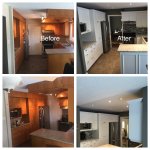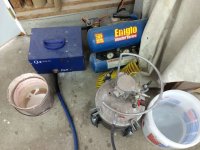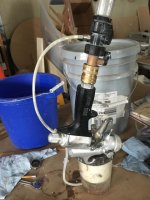Mikeyfondu
Member
- Joined
- Mar 13, 2014
- Messages
- 83
I finally got some kem Aqua in my hands! It took me a while to find but after a few calls , then getting past to a rep. Then driving a hour I finnaly have it in my hands.
I am planning on spraying it with my Fuji mini mite 4 I will be shooting it with t-series syphon gun.I have the stock 1.3mm and 1.8mm air cap.
I got the surfacer and kem Aqua plus white, and will be spray some cabinet for a family member.
Plan of attack
Degrease with tsp.
Sand 120
Wipe with tack cloth
Spray surface then sand with 220
Give two coats of kem Aqua plus white.
Any tips or tricks would be appreciated! Thank you .
I am planning on spraying it with my Fuji mini mite 4 I will be shooting it with t-series syphon gun.I have the stock 1.3mm and 1.8mm air cap.
I got the surfacer and kem Aqua plus white, and will be spray some cabinet for a family member.
Plan of attack
Degrease with tsp.
Sand 120
Wipe with tack cloth
Spray surface then sand with 220
Give two coats of kem Aqua plus white.
Any tips or tricks would be appreciated! Thank you .




